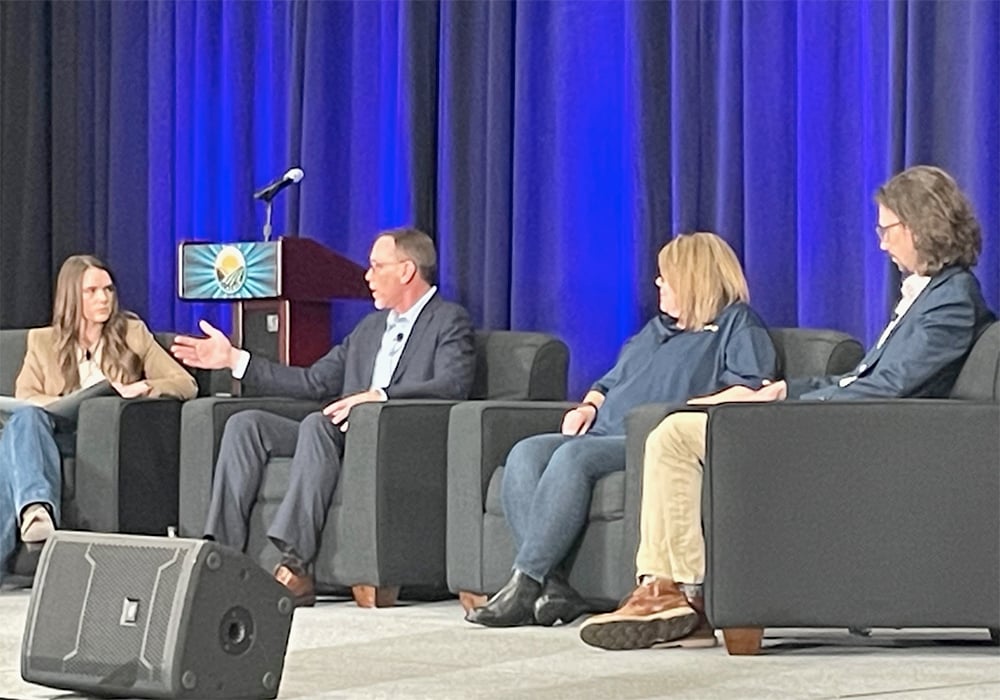Commodity Classic day 1: Growers feel “blindsided” by dicamba ruling New pesticide regulations annoy U.S. farmers

Glacier FarmMedia– Day one of the 2024 Commodity Classic is in the books and a few interesting themes emerged from the annual gathering of U.S. corn, soybean, wheat and sorghum growers.
Read Also

AgScape offering educational initiatives to celebrate agriculture literacy month
AgScape is commemorating Canadian Agriculture Literacy Month (CALM) with a lineup of “engaging initiatives” to foster agriculture and food literacy…
U.S. farmers are clearly annoyed about a number of new pesticide regulations.
Growers felt blindsided by a federal district court ruling in Arizona vacating the 2020 registrations for a variety of dicamba products used on 50 million acres of U.S. corn and soybeans.
The ruling meant growers couldn’t use the product for the 2024 growing season.
However, the U.S. Environmental Protection Agency (EPA) has since ruled that growers can use existing stocks of the product that were packaged, labeled and shipped prior to the Feb. 6 court ruling.
That is a big relief to the country’s soybean and cotton growers, but they wonder what’s in store for 2025 and beyond.
Farmers are also concerned about the EPA’s response to numerous other court rulings that determined the regulator has continually failed to meet its Endangered Species Act obligations.
Farm groups say the EPA’s proposed Herbicide Strategy, which will bring registrations into compliance with the act, is going to cost them a fortune.
A survey conducted by the American Soybean Association (ASA) indicates 80 per cent of producers would not comply with the EPA’s proposal and would face “moderate to extreme” costs to become compliant.
“The proposal would likely require billions of dollars for farmers across the country to implement and could prevent some farmers from using certain herbicides entirely,” the ASA stated in a press release.
A petition it circulated collected 1,500 signatures from growers, applicators and other agricultural stakeholders calling for withdrawal of the proposal.
Soy growers were pleased that the EPA recently announced it has extended the deadline to finalize the strategy by three months to Aug. 30, giving it more time to consider their criticism of the strategy.
Another big topic of conversation at the convention is the 2024 Farm Bill, an omnibus package of legislation that covers everything from school nutrition programs to farm safety nets.
Grower groups are lobbying hard for a bill that “does no harm” to crop insurance programs and sets higher reference prices for crops that will trigger direct payments sooner under today’s falling price environment.
The U.S. Congress is still debating and designing the bill, which was originally supposed to be in place for 2023.
There was plenty of talk about markets at the conference as well.
Al Kluis, with Kluis Commodity Advisors, had good news and bad news for farmers.
The good news is that he thinks corn and soybean futures prices have bottomed out, at least temporarily.
The bad news is that if the U.S. Department of Agriculture’s yield and acreage forecasts for 2024-25 are correct, it doesn’t bode well for prices, especially for corn.
“We could see extremely low prices in the fall,” he said.
The soybean outlook doesn’t look nearly as bad, and he is extremely excited about the long-term future for that crop due to looming demand from the sustainable aviation fuel industry.
PepsiCo and Walmart talked about their US$120 million joint venture to support sustainable agriculture in the U.S. and Canada.
The program aims to accelerate the adoption of regenerative agriculture practices on more than two million acres of farmland in the U.S. and Canada, reducing greenhouse gas emissions by four million tonnes by 2030.
Monitor the pages of Farmtario and other Glacier FarmMedia publications for full stories on these and other topics from the 2024 Commodity Classic.
Source: Farmtario.com

